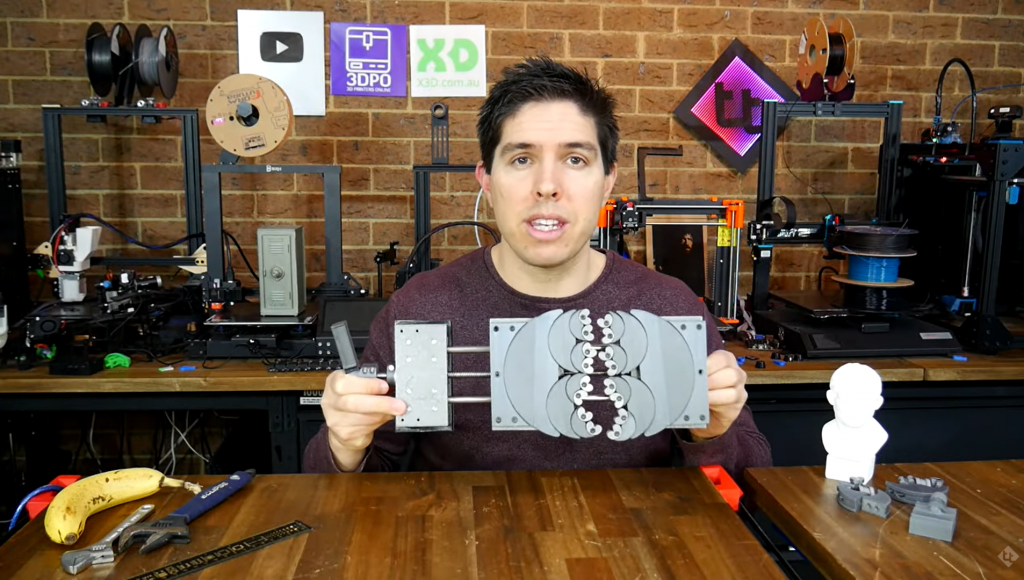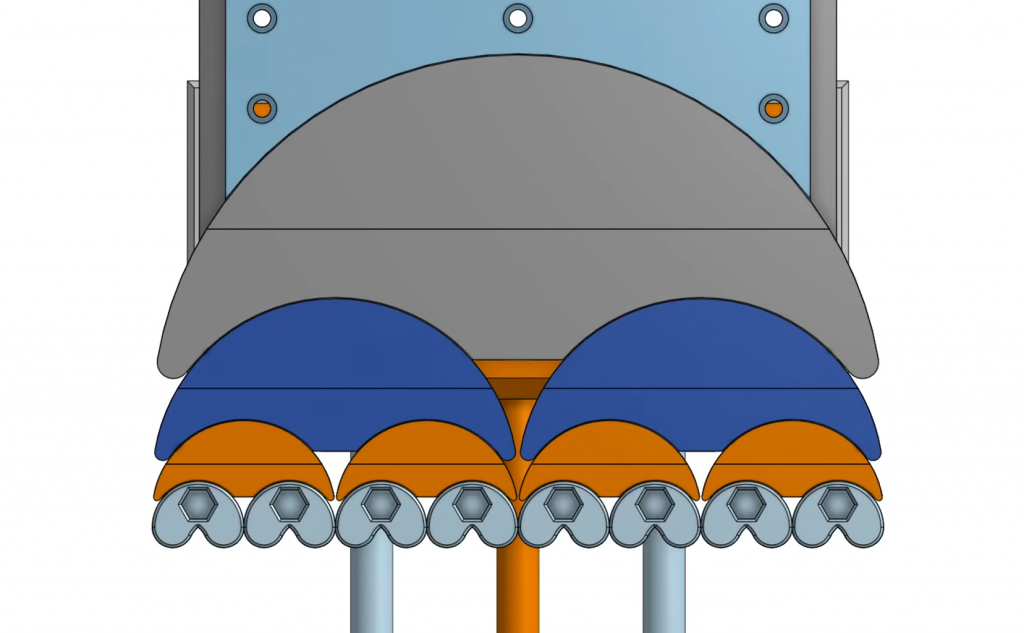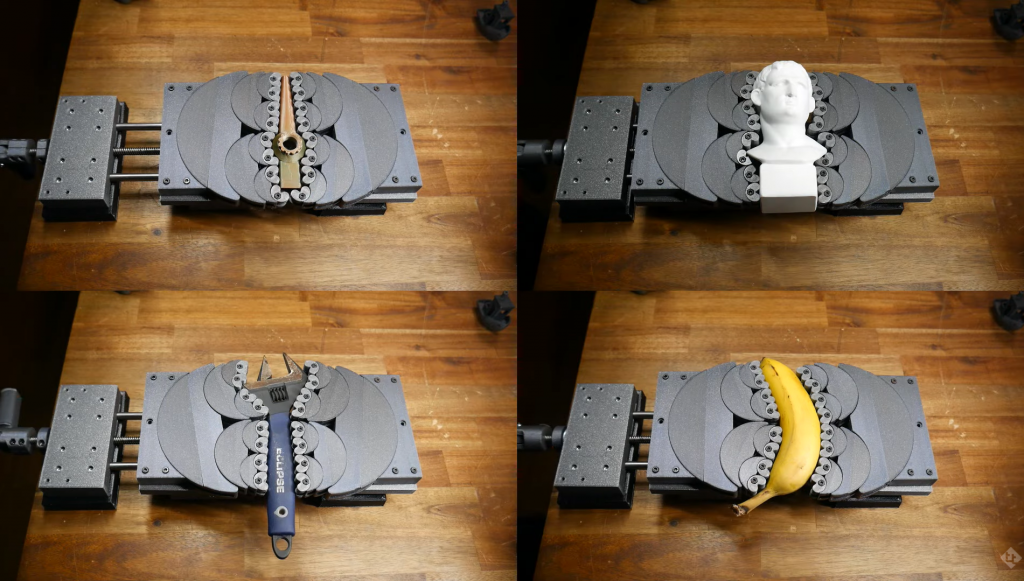Drawing inspiration from YouTuber Hand Tool Rescue, 3D printing content creator Teaching Tech has designed and 3D printed his own open-source version of a rare antique fractal vise.
Unlike a standard straight vise, which is typically only capable of clamping block-like parts, the 100 year old fractal design is capable of morphing to grip virtually any object, regardless of the complexity of the geometry. Dubbed ‘the coolest tool you didn’t know you needed’, the fractal vise is near impossible to purchase these days – this is where low-cost FFF 3D printing comes in.
Teaching Tech stated, “My mind was blown. I had no idea such an incredible tool existed, and I just needed to have my own. There’s no way just to buy one, however, so I knew I would need to make my own. Fortunately, I’m in a room surrounded by 3D printers.”

How does a fractal vise work?
In mathematics, fractals are complex geometric shapes that contain never-ending patterns. When you zoom in on a fractal design, what you see is a scaled down version of the original design, and this pattern repeats itself over and over (like an infinite set of Russian nesting dolls).
A well-known example of a fractal design is the 3D printable Sierpinski pyramid model, which many in the maker community have no doubt come across. The pyramid comprises five smaller pyramids, all of which are made up of five even smaller pyramids.
So how does the concept of a fractal relate to a vise? The fractal vise is actually made up of a series of stacked arcs, whereby each arc houses two smaller arcs that have half the diameter. In Teaching Tech’s open-source design, there are four layers of these arcs, meaning each jaw of the fractal vise features eight arc grippers which hold the part in place. In contrast, a conventional vise only has two lips which are unable to conform to the shape of the part between them.

3D printing the fractal vise
When starting the project, Teaching Tech had a number of specifications for the 3D printed vise already in mind. He wanted it to be able to wrap around almost any part geometry and constrain it to the point where it cannot move. He also wanted to design it so that it couldn’t rotate to the point of disassembling itself, and he wanted to minimize the use of support structures.
Teaching Tech’s plan for avoiding support material was to cut each of the arcs in half, whereby the large cross-sections are preserved across smaller pieces. This also had the effect of making the individual components easier to print and remove from the bed. The next problem involved tightening the assembly to fully constrain the parts being clamped. For this, he quite simply removed the grub screw on the original design and replaced it with stoppers integrated into the 3D model itself.
Once 3D printed and assembled, the fractal vise “worked beautifully”, clamping a whole host of non-conventional objects and securing them with ease. This included a spanner, an artistic bust, and even a banana.
All of the open-source STL files for the fractal vise can be found here, and a video tutorial of the assembly process can be found here. While Teaching Tech did use PLA and TPU to 3D print the fractal vise, other polymer filaments will do just fine.
The content creator concludes, “What I’m really excited about is seeing where the community takes the design with remixes and customization. I have no doubt the original metal version is superior to this but you just can’t get one, so this democratic manufacturing means that anyone with a 3D printer can have their own.”

The open-source 3D printing community is often a source of great innovation, yielding low-cost projects that you just don’t see in industry. A student YouTuber by the name of Lucas VRTech has previously designed and 3D printed a pair of low-cost finger tracking gloves for use in virtual reality. Named LucidVR, the open-source gloves cost just $22, and grant users the ability to precisely track their fingers without the use of dedicated VR controllers.
Elsewhere, open-source 3D printing enthusiast Johan Von Konow has previously launched a modular 3D printable MIDI synth as a DIY project. Dubbed the LEET Synthesizer, the fun project can be built for a grand total of $6, and requires only a few basic soldering and embedded electronics programming skills.
Nominations for the 2021 3D Printing Industry Awards are now open, have your say who is leading the industry now.
Subscribe to the 3D Printing Industry newsletter for the latest news in additive manufacturing. You can also stay connected by following us on Twitter, liking us on Facebook, and tuning into the 3D Printing Industry YouTube Channel.
Looking for a career in additive manufacturing? Visit 3D Printing Jobs for a selection of roles in the industry.
Featured image shows Teaching Tech and his open-source, 3D printed fractal vise. Photo via Teaching Tech.



